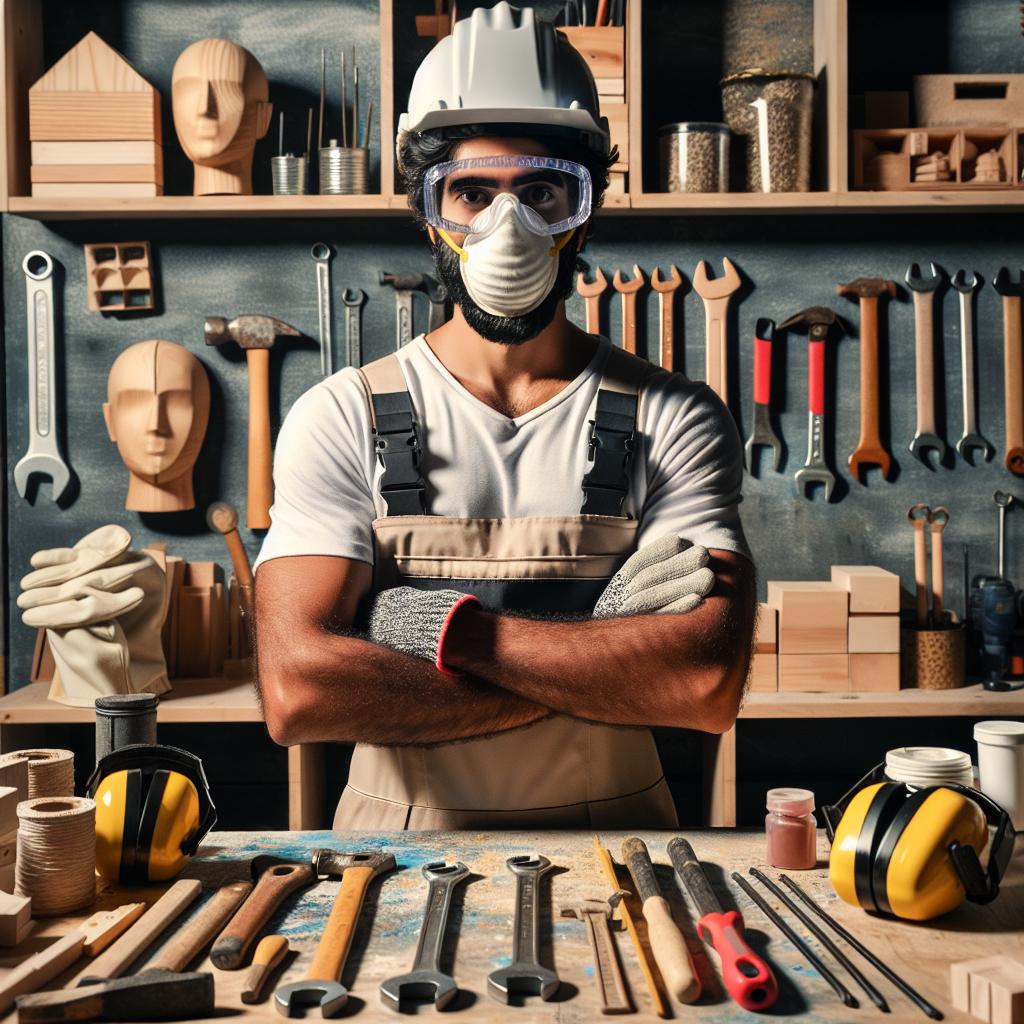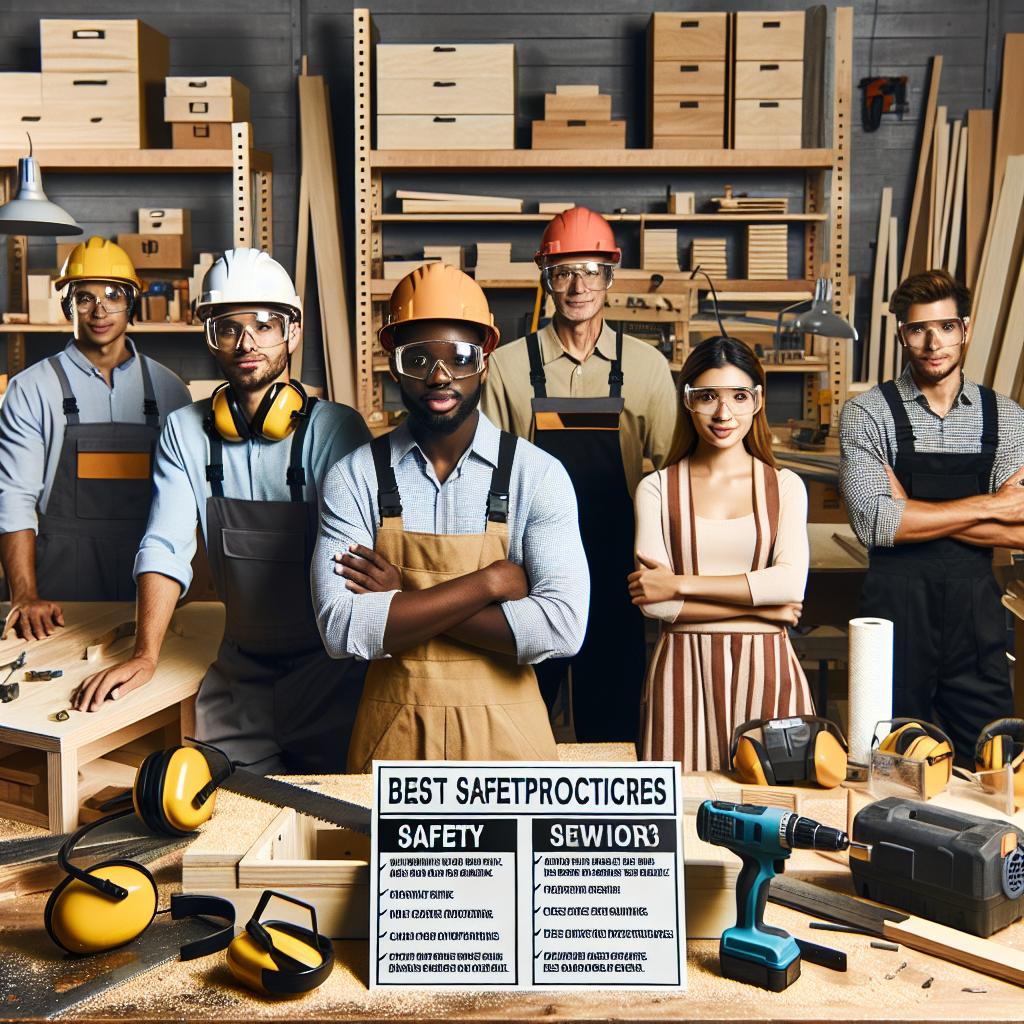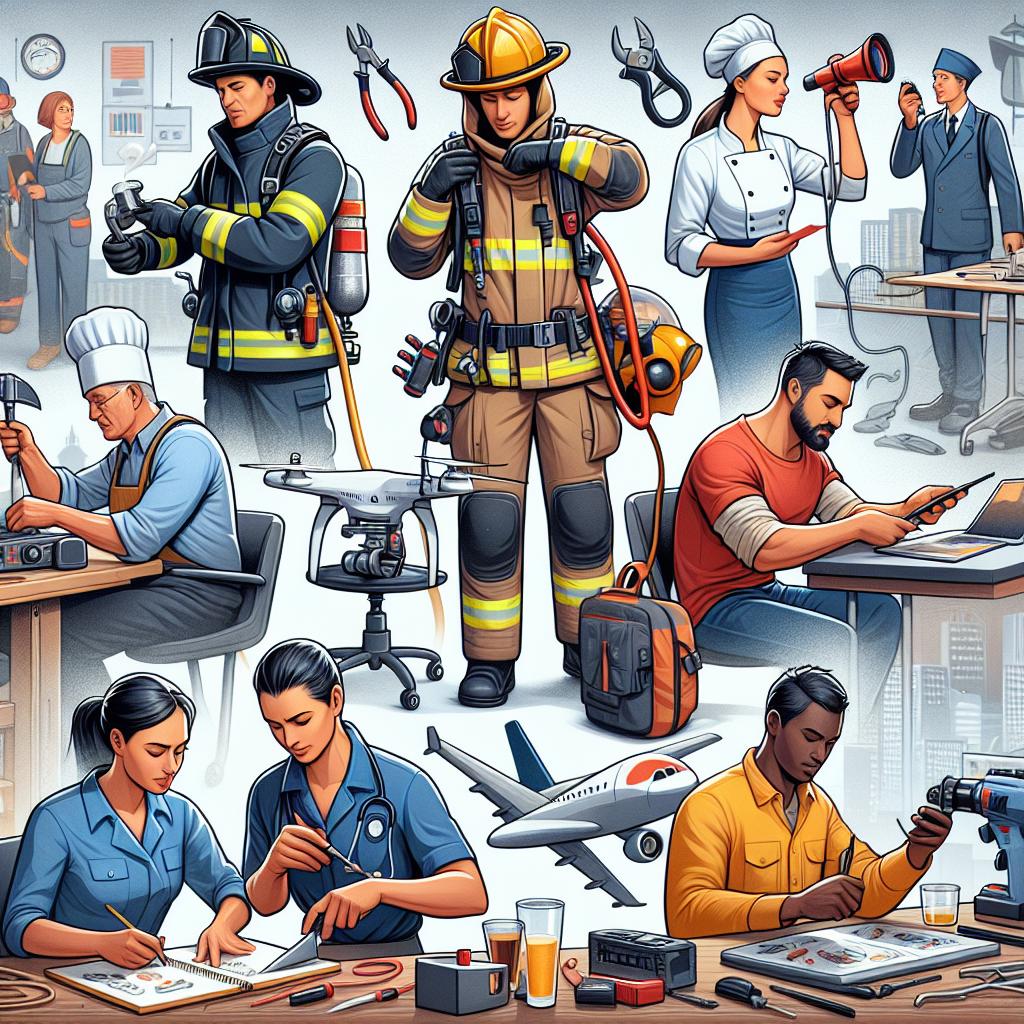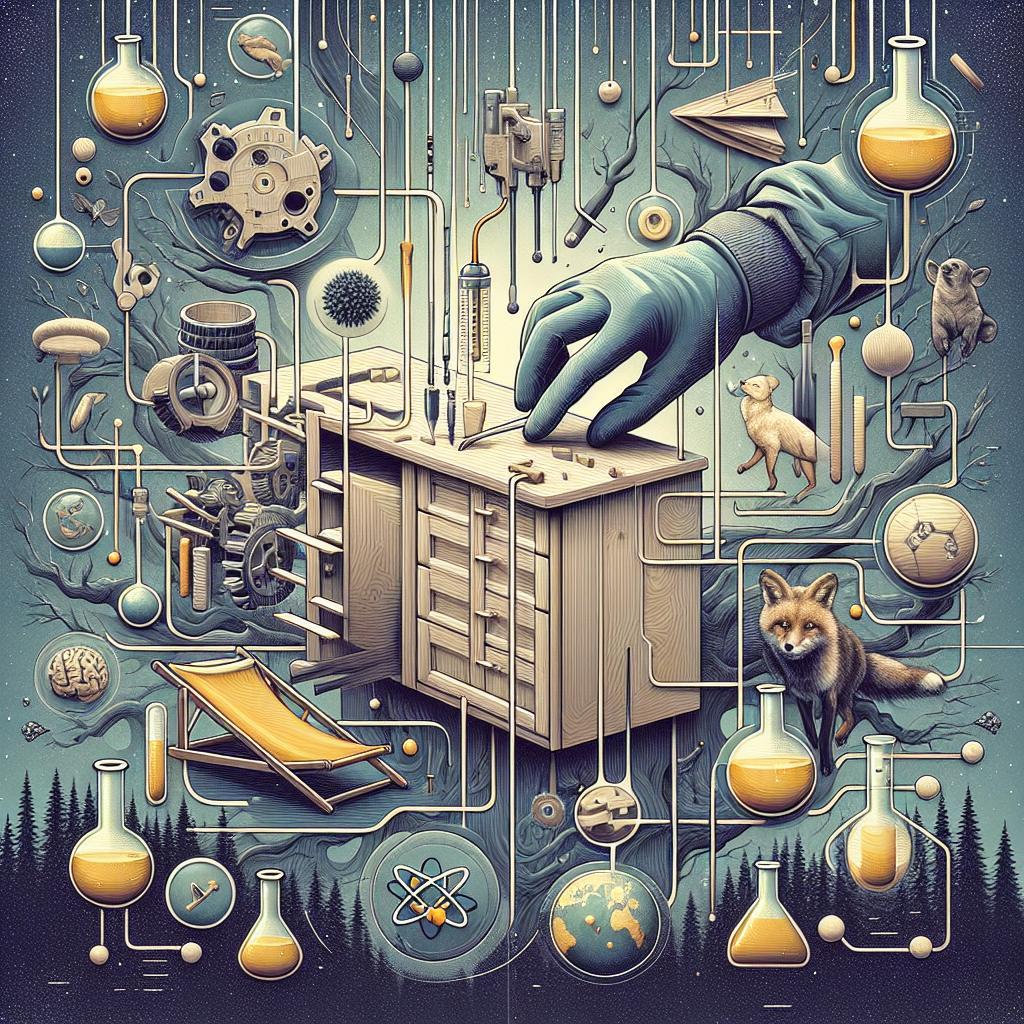In the world of craftsmanship, few endeavors are as rewarding as cabinet making. The blend of creativity and precision transforms raw materials into functional works of art that can elevate any space. However, amid the whirl of sawdust and the hum of power tools, safety must remain paramount. Whether you’re a seasoned woodworker or just beginning to explore the craft, understanding the potential hazards of cabinet making is essential to ensuring a productive and injury-free workshop experience. In this article, we will delve into essential safety tips that will help you cultivate a secure environment, allowing your creativity to flourish while minimizing risk. Let’s unlock the secrets to a safe cabinet making journey, paving the way for masterpieces that stand the test of time.
Understanding the Risks: An Overview of Cabinet Making Hazards
Cabinet making, while a rewarding craft, exposes woodworkers to various hazards that can compromise health and safety. Physical injuries are a significant concern, stemming from the use of heavy machinery and hand tools. Common incidents include cuts, lacerations, and even amputations that can result from improper handling of saws and chisels. Additionally, the repetitive motions associated with sanding and assembling can lead to musculoskeletal disorders, impacting long-term health. It’s vital for craftsmen to maintain proper ergonomics and employ techniques that minimize strain on their bodies.
Furthermore, exposure to hazardous materials poses another layer of risk. Wood dust generated during cutting and sanding can cause respiratory problems, while chemicals in stains and finishes may lead to dermatitis or more serious health issues if inhaled or absorbed through the skin. To mitigate these dangers, the implementation of robust safety measures is crucial. Consider the following preventative strategies:
- Always wear appropriate Personal Protective Equipment (PPE) such as gloves, masks, and goggles.
- Install effective ventilation systems in your workspace to reduce airborne contaminants.
- Implement regular cleaning protocols to minimize dust build-up and maintain a safe working environment.

Essential Personal Protective Equipment for Safe Craftsmanship
When engaging in the art of cabinet making, equipping yourself with the right protective gear is paramount. Ensuring your safety while working with power tools and raw materials can significantly reduce the risk of accidents. Here’s a list of essential personal protective equipment to keep in mind:
- Safety Glasses: Shield your eyes from flying debris and dust.
- Hearing Protection: Use earmuffs or earplugs to protect against loud machinery.
- Dust Masks or Respirators: Essential for filtering out inhalable particles.
- Gloves: Choose durable gloves to protect your hands while allowing dexterity.
- Steel-Toed Boots: Safeguard your feet from heavy objects and sharp tools.
By adopting these items as part of your standard practice, you not only safeguard your physical well-being but also enhance your overall craftsmanship. For a clear understanding of how to maintain these equipment effectively, consider the following table:
| Equipment | Maintenance Tips |
|---|---|
| Safety Glasses | Clean with a soft cloth; inspect for scratches. |
| Hearing Protection | Wipe down regularly; store in a clean area. |
| Dust Masks | Dispose after use; avoid reusing. |
| Gloves | Replace when damaged; wash if reusable. |
| Steel-Toed Boots | Check for leaks or wear; clean with proper products. |

Creating a Safe Work Environment: Best Practices in Cabinet Shops
Establishing a safe work environment in cabinet shops is essential for protecting both employees and the quality of the work produced. First and foremost, it is crucial to prioritize personal protective equipment (PPE). Workers should be equipped with gear such as safety glasses, ear plugs, and gloves to safeguard against the hazards of woodworking machinery. Adequate training on how to use tools and equipment safely can further minimize the risk of accidents. Additionally, implementing a regular maintenance schedule for tools and equipment ensures they are functioning properly, reducing the chance of malfunction-related injuries.
Furthermore, creating a culture of safety involves fostering open communication among team members about potential hazards and near-miss incidents. Encourage workers to report unsafe conditions and provide a means for them to do so anonymously if necessary. Regular safety meetings can serve as a platform to discuss safety protocols and share insights. Implementing clear signage throughout the shop also reinforces the importance of safety practices. Below is a simple overview of helpful safety practices:
| Safety Practice | Description |
| PPE Usage | Ensure all workers wear appropriate personal protective equipment. |
| Tool Maintenance | Conduct regular checks and maintenance on tools to ensure safety. |
| Safety Training | Provide training on safe operation of machinery and tools. |
| Incident Reporting | Encourage reporting of hazards and near-misses without fear of punishment. |

Tools of the Trade: Ensuring Equipment Safety and Maintenance
To achieve excellence in cabinet making, maintaining the safety of your equipment is paramount. Regular inspection and maintenance can prevent accidents and ensure your tools function optimally. Here are some essential practices to follow:
- Routine Inspections: Frequently check your tools for signs of wear, damage, or malfunction.
- Cleaning: Keep your equipment clean to avoid accumulation of debris that can lead to mishaps.
- Blade and Bit Sharpening: Ensure blades and bits are sharp and in good condition to achieve precise cuts.
- Calibration: Regularly calibrate your machinery to align with specific requirements and enhance performance.
In addition to routine maintenance, be mindful of equipment storage and ergonomics in your workspace. Proper storage not only extends the life of your tools but also minimizes the risk of accidents. Consider implementing the following strategies:
| Storage Tips | Benefits |
|---|---|
| Store tools in designated locations. | Reduces clutter and improves accessibility. |
| Use toolboxes and racks. | Protects tools from damage and enhances organization. |
| Label storage areas. | Facilitates quick tool retrieval and returns. |
Q&A
Q&A on Cabinet Making Safety Tips
Q1: Why is safety a priority in cabinet making?
A: Safety in cabinet making is paramount because the workshop can be filled with various hazards. From sharp tools to heavy materials and the potential for chemical exposure, adhering to safety protocols helps prevent injuries and ensures a secure working environment.
Q2: What basic safety gear should every cabinet maker wear?
A: Essential safety gear includes safety goggles to protect your eyes from debris, ear protection to shield against loud machinery, and a dust mask or respirator for breathing protection. Durable gloves can also prevent cuts when handling rough materials.
Q3: Are there specific practices to follow with power tools?
A: Absolutely! Always read the user manual before operating any power tool. Keep your workspace clean and organized, and never bypass safety guards. Additionally, make it a point to use the right tool for the job and maintain a firm grip to prevent accidents.
Q4: How should one handle heavy materials during cabinet making?
A: Lifting heavy materials requires proper techniques to avoid injury. Always lift with your legs, not your back, and if a piece is too heavy, don’t hesitate to ask for help or use equipment like a dolly or hoist. Additionally, ensure that your workspace is spacious enough to navigate such materials safely.
Q5: What should you know about working with adhesives and finishes?
A: Many adhesives and finishes contain harmful chemicals, so it’s crucial to work in a well-ventilated area. Always read the labels and follow safety guidelines for usage. Wearing gloves and a mask can also minimize exposure to skin and inhalation hazards.
Q6: How can one maintain a clean and safe workspace?
A: Keeping your workspace tidy is essential! Routinely clean up wood shavings and dust to avoid slips and respiratory issues. Establish designated storage for tools and materials, and ensure that all equipment is returned to its place after use to prevent accidents.
Q7: Are there safety practices specific to working with machinery?
A: Yes, when working with machinery, always ensure that you understand how to operate it correctly before use. Conduct regular maintenance checks, be mindful of loose clothing or hair that could get caught in moving parts, and always have an emergency plan in place.
Q8: What should one do in case of an accident?
A: If an accident occurs, remain calm. First, assess the situation to determine if immediate medical help is required. If so, call for assistance. For minor injuries, ensure you have a well-stocked first aid kit nearby and learn how to treat common injuries like cuts and burns.
Q9: How can I continuously improve my safety practices in cabinet making?
A: Forming a habit of safety begins with ongoing education. Attend workshops, read safety manuals, and discuss safety with fellow cabinet makers. Keeping informed about new tools and safety equipment can also greatly enhance your safety practices.
Q10: What is the takeaway message regarding cabinet making safety?
A: The ultimate goal of cabinet making safety is to create an environment where creativity can flourish without the worry of accidents. By embracing safety protocols, utilizing the proper gear, and maintaining a tidy workspace, you ensure your craft remains enjoyable and hazard-free.
—
This Q&A should provide a comprehensive overview of essential safety tips in cabinet making, promoting a well-informed approach to a fulfilling and safe woodworking experience.
Closing Remarks
As we conclude our exploration of cabinet making safety tips, it’s clear that the artistry of woodworking demands not only skill and creativity but also a steadfast commitment to safety. By adopting these practices, you can cultivate a work environment that prioritizes your well-being while allowing your craft to flourish. Remember, every great project begins with a solid foundation—not just of wood, but of precaution. Embrace these guidelines, share them with fellow craftsmen, and let safety be the silent partner in your woodworking journey. In the intricate dance of tools and materials, let us always ensure that the safety rhythm plays loud and clear. Happy crafting!

